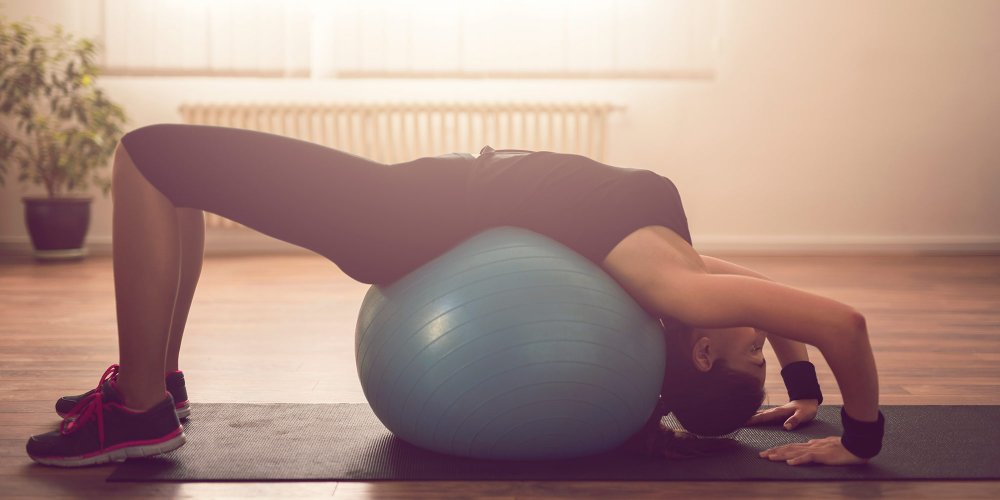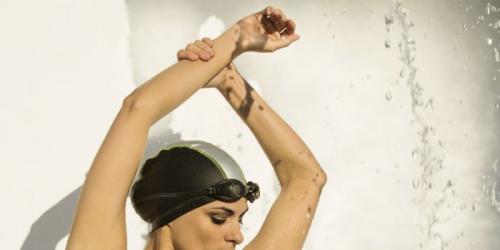How can a big ball allow us to build and strengthen the whole body? We asked Guillaume Merceron, coach and manager of Mouv & Coach in Nantes.
"Originally, the Swiss Ball was used by physiotherapist Suzanne Klein-Vogelbach, who practiced in Switzerland (hence the other name given to the Swiss Ball: Klein balloon). In the 1960s, she used it to relieve the back pain of patients who came to see her.
In the 90s, in the United States, the Swiss Ball is recovered by the sports coaches, "explains Guillaume Merceron.
Today, if the Swiss Ball is still used to relieve pain such as low back pain - it is also recommended for pregnant women, its strengths in muscle building have attracted fitness enthusiasts, who use it to to make the silhouette work harmoniously, without increasing the volume of the muscles.
Which Swiss Ball to choose?
There are three sizes of Swiss Ball: 55, 65 and 75 centimeters in diameter. We choose it according to its size. If you measure between 1m45 and 1m65, you will opt for a 55cm diameter balloon; between 1m65 and 1m85, we choose a balloon of 65 cm and if we exceed 1m85, we prefer the balloon 75 cm in diameter. Guillaume Merceron advises against using a balloon that is not adapted to his size.
He also advises to inquire with an ergonomist to adopt the best swelling possible. For example, we recommend the Swiss Ball to promote good posture in front of his office because it allows to stand up straight. It muscle and his back and abdominals , provided you have the right setting.
How to use a Swiss Ball?
"The fact that the Swiss Ball is unstable - more or less depending on the swelling - implies that you have to recruit your deep muscles to fight this instability," explains Guillaume Merceron.
Then, there are targeted exercises to come to solicit this or that muscle group. The coach sees only advantages: for him, the Swiss Ball is ideal for the beginner in fitness, there is no cons indication if it is used in the appropriate configuration and it can almost any muscle, thanks targeted exercises. However, it is most often used for the back, buttocks, legs and abdominals. The major asset of the Swiss Ball is that it allows a smooth work. It is used especially in pilates postures.
Before starting solo at home, Guillaume Merceron recommends anyway to make some adjustments with a sports coach.
3 exercises to train with a Swiss Ball
- Exercise crunch on gym ball
What muscle? This exercise helps to strengthen the right and transverse abdomen (deep muscle abdominals).
Position: Stand on your back on the Swiss Ball, legs flexed and slightly apart to improve stability. The hands are behind the ears and elbows apart. Relax to wrap your back as much as possible on the ball. You must feel a slight stretch in your stomach. The head should be kept straight, look up.
Movement: take off the shoulders by contracting your abdominal muscles. Remember to blow while doing the movement, look upward and not forward (as for a classic crunch). Do not pull the back of the neck and let go to return to the original position.

- Exercise to strengthen the buttocks
Position: place the belly and pelvis resting on the Swiss Ball, resting on the ground with your hands (low shoulders) and feet.
Movement: lift one leg up horizontally and then flex the knee to form a 90 degree angle. Position the heel upwards with your foot flat. Make small movements up and down without raising your foot too high to avoid digging your back. Blow uphill and exhale downhill.

- Squat exercise
What muscle? The squat can strengthen and tone all of your legs and buttocks. Thanks to the Swiss Ball against the wall, its execution is easier and less restrictive for the knees but its efficiency remains the same.
Position: place the Swiss Ball between the wall and your back at the level of the lumbar hollow (between the sacrum and the shoulder blades). Move your feet away from the wall to place your weight against the ball. The spine is stretched. The feet are parallel to the width of the pelvis or shoulders which are relaxed. The arms are parallel to the ground.
Movement: while inhaling, bend your knees, glutes back, back extended. Exhale, stretch your legs, pushing back on your heels and keeping your knees slightly unlocked. Attention, the weight of the body must be maintained on the heels. Also, avoid knees going too far forward when flexing.

Thanks to Guillaume Merceron www.mouvcoach.com




